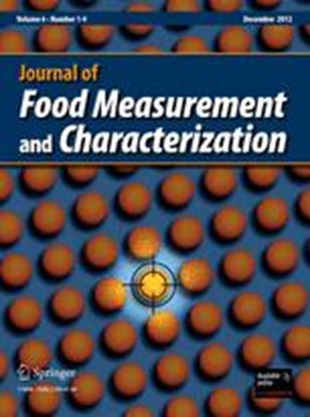Preparation, characterization and evaluation of L-theanine - zinc chelate: increasing stability, antioxidant, and antidiabetic activity
Abstract
The study aimed to prepare the chelate of L-theanine (LT) with zinc (Zn) and evaluate its stability, antioxidant and antidiabetic activity. The chelation mechanism between Zn2+ and LT was investigated by ultraviolet-visible, Fourier transform infrared, scanning electron microscopy/energy dispersive spectrometer and 1H nuclear magnetic resonance spectroscopy. L-theanine-Zn chelate (LT-Zn) was obtained using LT to Zn citrate in a mass ratio of 3:1 at pH 6 and 70 °C for 180 min with the chelation efficiency of 61.86 ± 1.26%. The results revealed the amino nitrogen atoms and carboxyl oxygen atoms in LT chelated with Zn ions, and the mass of the chelate was confirmed by liquid chromatography with tandem mass spectrometry. Scanning electron microscopy with the element analyzed by energy dispersive spectroscopy showed that the morphology of LT-Zn consisted of irregular granular particles with rough surface. The LT-Zn exhibited higher solubility and improved stability under 100 °C, various pH condition and different concentrations of glucose and NaCl (p < 0.05) than that of sulfate Zn and Zn gluconate. Compared to sulfate Zn and Zn gluconate, the LT-Zn showed better stability during simulated gastrointestinal digestion. The chelate also exhibited antioxidant activity, as well as an inhibitory effect on α-glucosidase and α-amylase. Overall, the study provided a novel approach to prepare Zn nutraceuticals with antioxidant and antidiabetic properties.

 求助内容:
求助内容: 应助结果提醒方式:
应助结果提醒方式:


